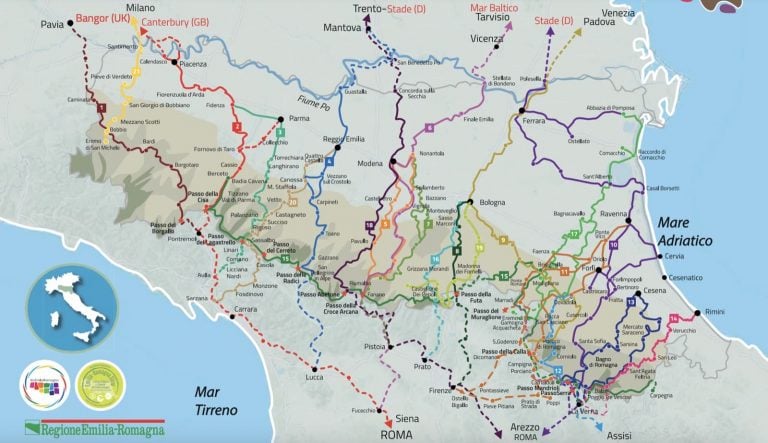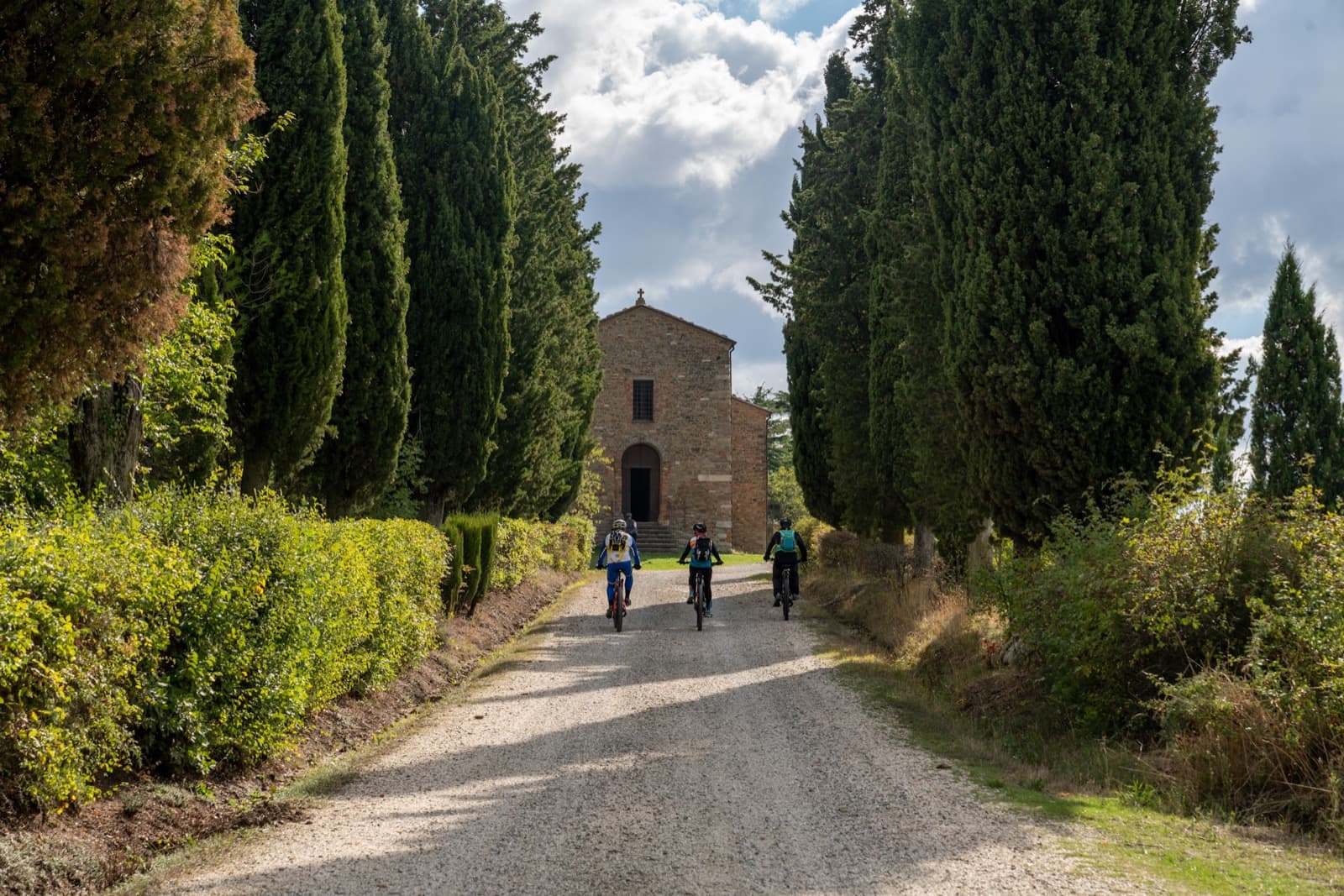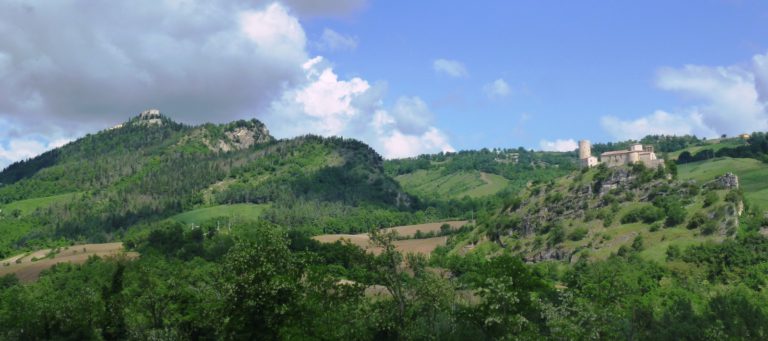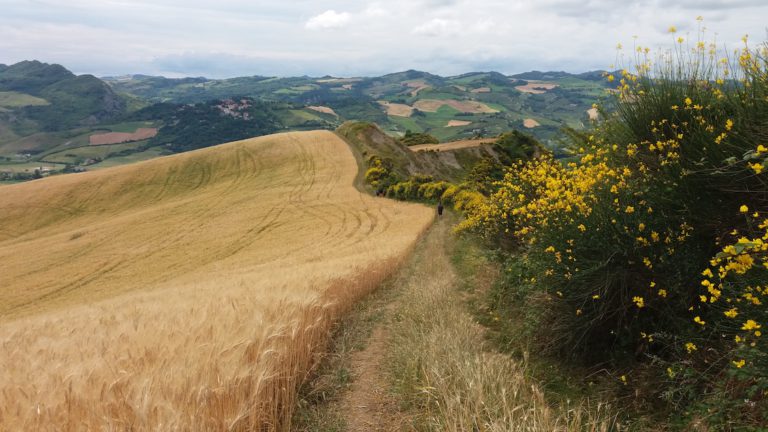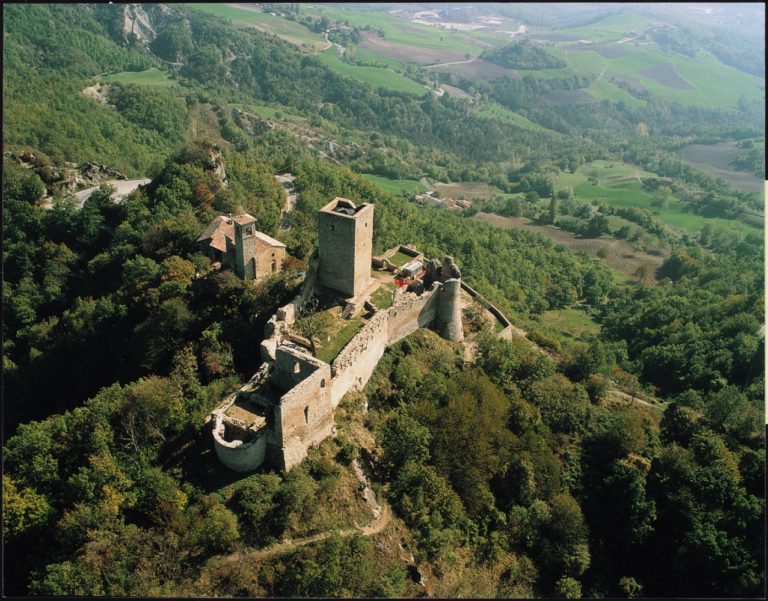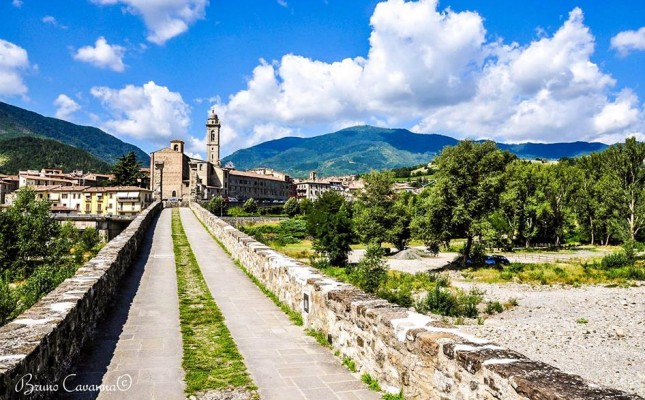The St Vicinio Way is one of Italy’s oldest historical paths. It follows a circular route that stretches for almost 215 miles between the provinces of Forlì-Cesena, Arezzo and Rimini and overlaps with the ancient Roman road network.
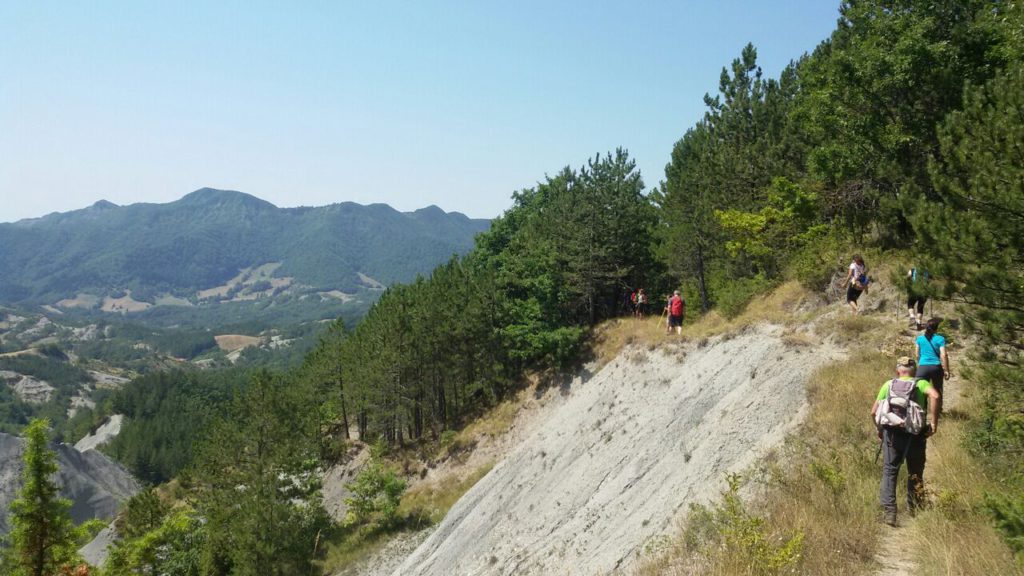
As the name suggests, it is dedicated to St Vicinio or Vicinius, the first bishop of Sarsina in the 4th–5th century AD, who played an important role in the evangelization of the Ravenna province. The path winds among the most significant places in the saint’s life, essentially following the River Savio valley, between Mount Fumaiolo, the source of the Tiber river, and the Adriatic.
Having been used as both a pilgrimage route to many religious sites and an alternative trans-Apennine road to Rome, the Way became very important for travelers and pilgrims from north-eastern Europe during the Middle Ages. It was one of the few routes that offered secure accommodation strategically placed along the way.
The St Vicinio trail crosses some of Italy’s prettiest landscapes, such as the Casentinesi Forests Park, and leads you through some of the great centres of Christian spirituality: the Madonna del Monte in Cesena, St Vicinius’ Basilica in Sarsina, La Verna Sanctuary, and the cultural and spiritual hub that is Camaldoli monastery.
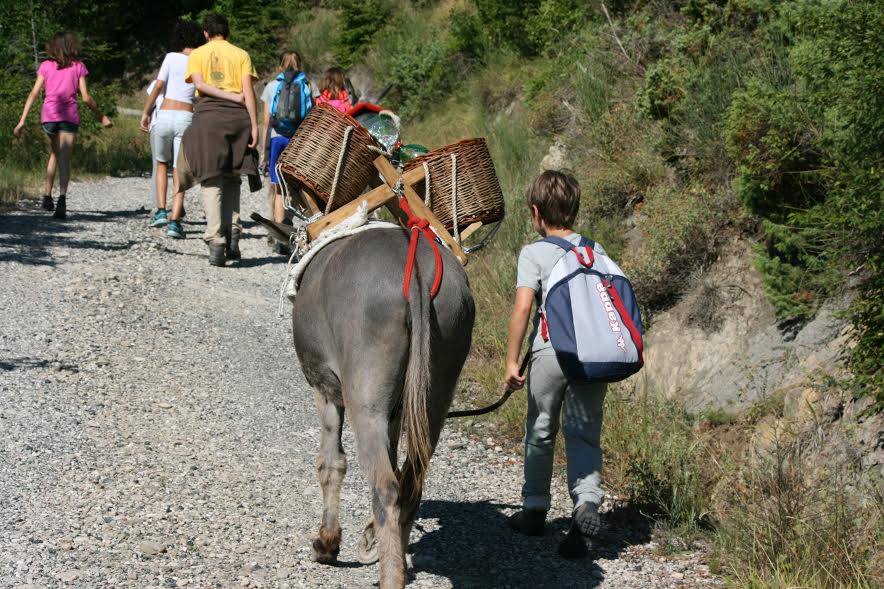
Alongside the most important places of worship, the route also takes in small sanctuaries and castles of even more remote origins which are still object of devotion of local communities.
The St Vicinio Way is a moderately difficult circular route that can be tackled by everyone: children, people with disabilities, cyclists and horse riders.
Hamlets along the Way
Besides being one of the most evocative religious itineraries in Italy, the St Vicinio Way also passes through some of the most famous italian towns and villages in the province of Cesena. One of these is Bagno di Romagna, a place known since Roman times for its healing thermal waters.
Bagno di Romagna isn’t far from the Forest of the Lama, a place of rustic beauty and an integral part of the Casentinesi Forests Park.
Services and practical information
The St Vicinio Way official website offers detailed itineraries, historical notes, and information about the available accommodation. You can also download GPS files of the individual stages and plan routes that are suitable for bicycles and horses.
The Way is circular so you can start wherever you wish; there’s no “right” place to begin.
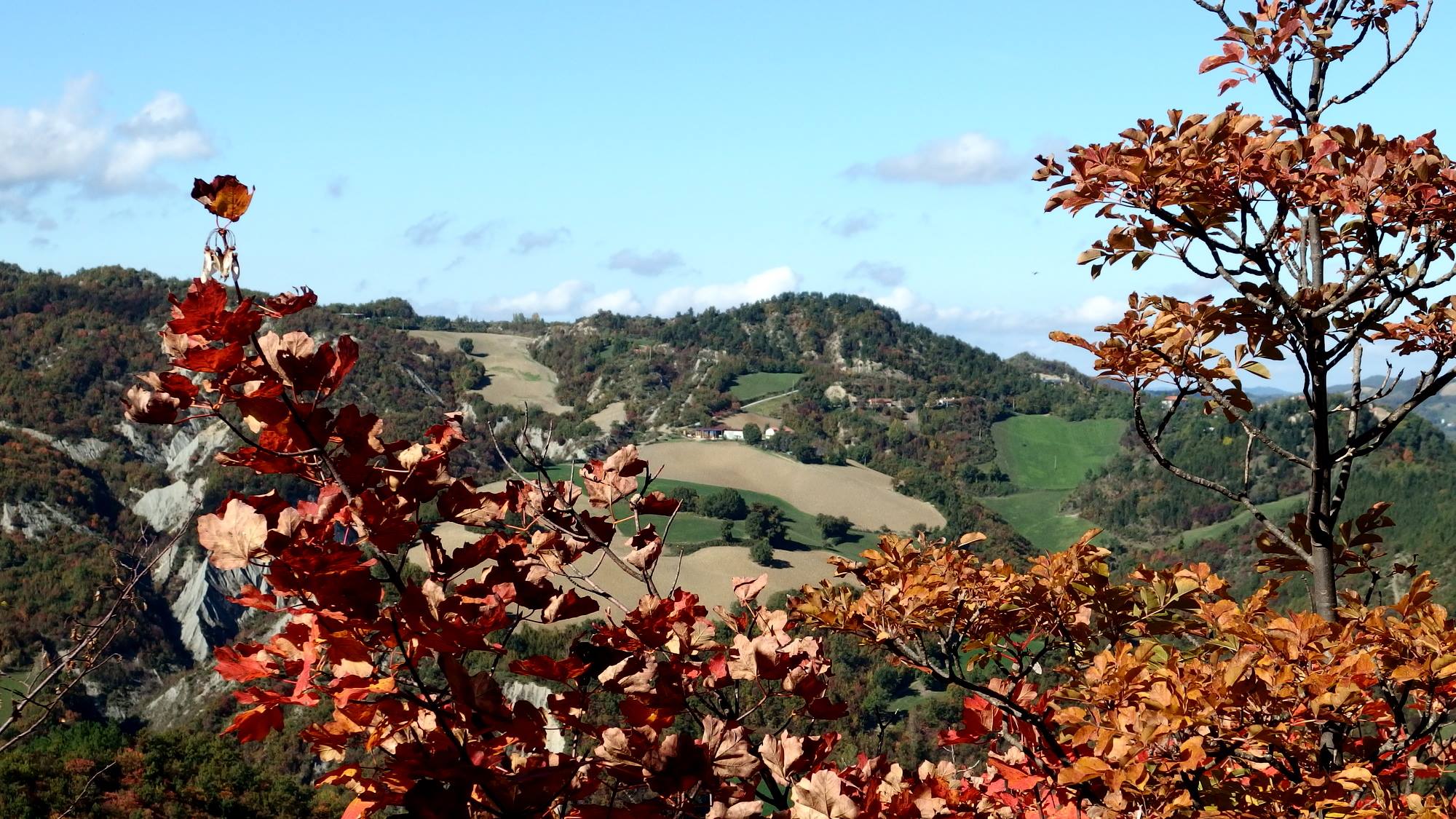
Italian regions crossed: Emilia-Romagna, Tuscany, Umbria
Stages:
Stage 1 | Sarsina – Bagno di Romagna (23.4 miles)
Variation 1A | Facciano – Quarto – Monteriolo – Pagno – Sarsina (12.4 miles)
Variation 1B | Careste – Ranchio – Rivoschio church – Facciano (21.1 miles)
Stage 2 | Bagno di Romagna – Camaldoli (12.6 miles) Variation 2A | Bagno di Romagna – Alpe di Serra (5 miles)
Variation 2B | Alpe di Serra – Rotta dei Cavalli – Verghereto (6.2 miles)
Stage 3 | Camaldoli – Badia Prataglia (7.5 miles)
Stage 4 | Badia Prataglia – La Verna (7.5 miles)
Stage 5 | La Verna – Verghereto (10.7 miles)
Stage 6 | Verghereto – Balze (8.1 miles)
Stage 7 | Balze – Sant’Agata Feltria (14.1 miles)
Stage 8 | Sant’Agata Feltria – Pietra dell’Uso (14.4 miles)
Stage 9 | Pietra dell’Uso – Sogliano al Rubicone (5.6 miles)
Stage 10 | Sogliano al Rubicone – Borghi (13.6 miles)
Stage 11 | Borghi – Sorrivoli (10.7 miles)
Stage 12 | Sorrivoli – Cesena (11.8 miles)
Stage 13 | Cesena – Ciola (16.2 miles)
Stage 14 | Ciola – Sarsina (8.1 miles)
Variation 14A | Fonte San Vicinio – Nuvoleto – Linaro (3.7 miles)
Variation 14B | SP12B road junction – Sarsina – Bazzano – Careste (1.6 miles)
Variation 14C | Ciola – Mercato Saraceno – Sarsina (13 miles)
For any info about [Emilia Romagna Slow] please contact <m.valeri@aptservizi.com>
Author

Walter Manni
Explorer and Adventurer: loves sailing the oceans, climbing the highest mountains and surfing on the waves of the web
You may also like
Route Planner: Sloways in Emilia Romagna
by Walter Manni /// July 31, 2024
7 Iconic Places along the Cammino di San Vicinio
by Margherita e Nick The Crowded Planet /// January 17, 2022
Saint Francis’s walk from Rimini to La Verna
by Arturo Castellini /// October 20, 2017

Interested in our newsletter?
Every first of the month, an email (in Italian) with selected contents and upcoming events.
